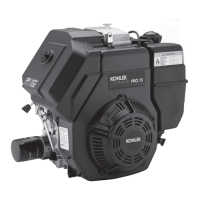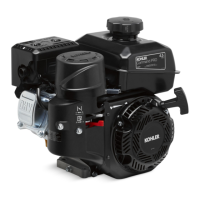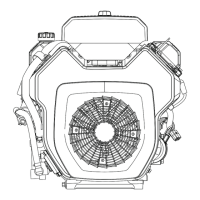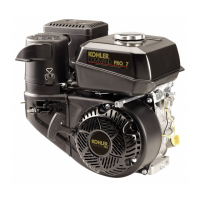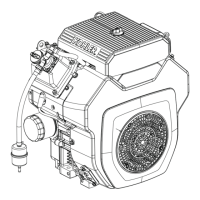10.8
Section 10
Inspection and Reconditioning
Excessive Combustion Temperatures: The white
deposits seen here indicate very high combustion
temperatures, usually due to a lean fuel mixture.
Gum: Gum deposits usually result from using stale
gasoline. Gum is a prevalent cause of valve sticking.
The cure is to ream the valve guides and clean or
replace the valves, depending on their condition.
Stem Corrosion: Moisture in fuel or from
condensation is the most common causes of valve
stem corrosion. Condensation occurs from improper
preservation during storage and when engine is
repeatedly stopped before it has a chance to reach
normal operating temperatures. Replace corroded
valves.
Overheating: An exhaust valve subject to overheating
will have a dark discoloration in the area above the
valve guide. Worn guides and faulty valve springs
may cause this condition. Also check for clogged air
intake, and blocked fi ns when this condition is noted.
Valve Guides
If a valve guide is worn beyond specifi cations, it will
not guide the valve in a straight line. This may result
in burnt valve faces or seats, loss of compression, and
excessive oil consumption.
To check valve guide-to-valve stem clearance,
thoroughly clean the valve guide and, using a split-
ball gauge, measure the inside diameter of the
guide. Then, using an outside micrometer, measure
the diameter of the valve stem at several points on
the stem where it moves in the valve guide. Use
the largest stem diameter to calculate the clearance
by subtracting the stem diameter from the guide
diameter. If the intake or exhaust clearance exceeds
the specifi cations in the Valve Specifi cation table,
determine whether the valve stem or guide is
responsible for the excessive clearance.
If the guides are within limits but the valve stems are
worn beyond limits, install new valves.
